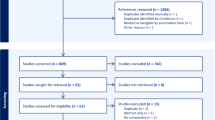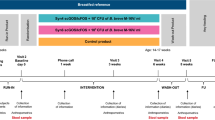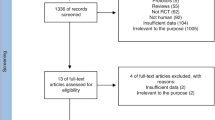Abstract
Infant formulas are often heat sterilized in hospitals where water contamination or nosocomial infection is a concern, but there are few studies of the effect of high heat on the nutritional value of infant formula. In particular, the effect of heat sterilization on free amino acid (FAA) concentrations is seldom discussed. In view of the importance of these nutrients for infant growth, we investigated the FAA concentrations of infant formula after heat sterilization. Powdered infant formulas were reconstituted with hot water (80°C) in glass bottles and placed in an autoclave for 5 min at 105°C and 5600 kg/m2 of pressure. Additional samples of formula were prepared by conventional methods to serve as controls. After autoclaving, we measured the FAA concentrations with ion exchange chromatography. The results were compared with those obtained after conventional preparation. We found a 19.5% lower amount of total protein after autoclaving compared with conventional preparation. Concentrations of total FAA were significantly lower after autoclaving (696.5±101.4 vs 899.4±152.2 μmol/l, P=0.01). The concentrations of individual amino acids were also lower in autoclaved infant formulas, with differences ranging from −4.1 to 71.5% (mean 22.6%). Concentrations of certain amino acids were more than 30% lower, such as valine (71.5%), citrulline (61.1%), glutamine (60.6%), ethanolamine (54%), and lysine (39.2%). Both essential and nonessential amino acids were similarly affected by autoclaving, 28.17 and 27.13%, respectively, lower than in controls (P=0.37). The concentration of ammonia was significantly higher after autoclaving (645.2±76.2 vs 393.2±140.7 μmol/l, P=0.0003). However, the urea level was significantly lower after autoclaving than after conventional preparation (1110.8±162.7 vs 1426.5±209.5 μmol/l, P=0.0004). The accumulation of ammonia may reflect degradation of protein and amino acids. Autoclaving clearly results in decreased concentrations of FAA in infant formula. The increased concentration of ammonia after autoclaving is of concern if it leads to deleterious effects.
This is a preview of subscription content, access via your institution
Access options
Subscribe to this journal
Receive 12 print issues and online access
$259.00 per year
only $21.58 per issue
Buy this article
- Purchase on Springer Link
- Instant access to full article PDF
Prices may be subject to local taxes which are calculated during checkout



Similar content being viewed by others
References
Adrian J (1974). Nutritional and physiological consequences of the Maillard reaction. World Rev Nutr Diet 19, 71–122.
Agostoni C, Carratu B, Boniglia C, Riva E, Sanzini E (2000). Free amino acid content in standard infant formulas: comparison with human milk. J Am Coll Nutr 19, 434–438.
Alkanhal HA, Al-Othman AA, Hewedi FM (2001). Changes in protein nutritional quality in fresh and recombined ultra high temperature treated milk during storage. Int J Food Sci Nutr 52, 509–514.
Angelino PD, Christen GL, Penfield MP, Beattie S (1999). Residual alkaline phosphatase activity in pasteurized milk heated at various temperatures – measurement with the Fluorophos and Scharer rapid phosphatase tests. J Food Protect 62, 81–85.
Baltes W (1982). Chemical changes in food by the Maillard reaction. Food Chem 9, 59–73.
Chesney RW, Helms RA, Christensen M, Budreau AM, Han X, Sturman JA (1998). The role of taurine in infant nutrition. Adv Exp Med Biol 442, 463–476.
Chow SL, Gandhi V, Krywawych S, Clayton PT, Leonard JV, Morris AA (2004). The significance of a high plasma ammonia value. Arch Dis Child 89, 585–586.
Chuang CK, Lin SP, Lee HC, Wang TJ, Huang FY, Yeung CY (2005). Free amino acids in full-term, pre-term human milk and infant formula. J Pediatr Gastroenterol Nutr 40, 496–500.
Chuang CK, Lin SP, Lin YT, Huang FY (1998). Effects of anticoagulants in amino acid analysis: comparisons of heparin, EDTA, and sodium citrate in vacutainer tubes for plasma preparation. Clin Chem 44, 1052–1056.
Desrosiers T, Savole L (1994). Extent of damage to amino acid availability of whey protein heated with sugar. J Dairy Res 58, 431–441.
Donovan SM, Lonnerdal B (1989). Non-protein nitrogen and true protein in infant formulas. Acta Paediatr Scand 78, 497–504.
Duffy B, Gunn T, Collinge J, Pencharz P (1981). The effect of varying protein quality and energy intake on the nitrogen metabolism of parenterally fed very low birthweight (<1600 g) infants. Pediatr Res 15, 1040–1044.
Feder HM, Pugno PA (1986). Sterilization of infant formula: current practices and recommendations. J Family Pract 22, 259–262.
Ferreira IM (2003). Quantification of non-protein nitrogen components of infant formulae and follow-up milk: comparison with cow's and human milk. Br J Nutr 7, 1–23.
Gerber MA, Berliner BC, Karlous JJ (1983). Sterilization of infant formula. Clin Pediatr 22, 344–349.
Hartree EF (1972). Determination of protein: a modification of the Lowry method that gives a linear photometric response. Anal Biochem 48 (2), 422–427.
Hurrell RF, Carpenter KJ (1977). Maillard reactions in foods. In: Hoyem T, Kvale O (eds). Physical, Chemical, and Biological Changes in Food Caused by Thermal Processing. Applied Science Publishers Ltd.: London. pp 168–184.
Kilshaw PJ, Heppell LMJ, Ford JE (1982). Effects of heat treatment of cows' milk and whey on the nutritional quality and antigenic properties. Arch Dis Child 57, 842–847.
Langhendries JP, Hurrell RF, Furniss DE, Hischenhuber C, Finot PA, Bernard A et al. (1992). Maillard reaction products and lysinoalanine: urinary excretion and the effects on kidney function of preterm infants fed heat-processed milk formula. J Pediatr Gastroenterol Nutr 14, 62–70.
Lonnerdal B, Hernell O (1998). Effects of feeding ultrahigh-temperature-treated infant formula with different protein concentrations or powdered formula as compared with breast-feeding, on plasma amino acids, hematology and trace element status. Am J Clin Nutr 68, 350–356.
Mauron J (1990). Influence of processing on protein quality. J Nutr Sci Vitaminol 36, S57–S69.
Metwalli AA, Lammers WL, Van Boekel MA (1998). Formation of homocitrulline during heating of milk. J Dairy Res 65, 579–589.
Needs EC, Capellas M, Bland AP, Manoj P, MacDougal D, Paul G (2000). Comparison of heat and pressure treatments of skim milk, fortified with whey protein concentrate, for set yogurt preparation: effects on milk proteins and gel structure. J Dairy Res 67, 329–348.
Pencharz PB, Ball RO (2003). Different approached to define individual amino acid requirements. Annu Rev Nutr 23, 101–106.
Recio I, Olieman C (1996). Determination of denatured serum proteins in the casein fraction of heat-treated milk by capillary zone electophoresis. Electrophoresis 17, 1228–1233.
Reeds PJ, Burrin DG, Davis TA, Fiorotto ML, Stoll B, van Goudoever JB (2000). Protein nutrition of the neonate. Proc Nutr Soc 59, 87–97.
Reeds PJ, Garlick PJ (2003). Protein and amino acid requirements and the composition of complementary foods. J Nutr 133, S2953–S2961.
Rigo J, Salle BL, Cavero E, Richard P, Putet G, Senterre J (1994). Plasma amino acid and protein concentrations in infants fed human milk or a whey protein hydrolysate formula during the first month of life. Acta Paediatr 83, 127–131.
Windmueller HG (1982). Glutamine utilization by the small intestine. Adv Enzymol 53, 201–237.
Acknowledgements
We would like to express our sincere thanks to Dr Mary Jeanne Buttrey for her revision of this article. This study was supported in part by grant from Mackay Memorial Hospital, Taipei (MMH 9143).
Author information
Authors and Affiliations
Corresponding author
Rights and permissions
About this article
Cite this article
Yeung, CY., Lee, HC., Lin, SP. et al. Negative effect of heat sterilization on the free amino acid concentrations in infant formula. Eur J Clin Nutr 60, 136–141 (2006). https://doi.org/10.1038/sj.ejcn.1602279
Received:
Revised:
Accepted:
Published:
Issue Date:
DOI: https://doi.org/10.1038/sj.ejcn.1602279
Keywords
This article is cited by
-
Processed milk waste recycling via thermal pretreatment and lactic acid bacteria fermentation
Environmental Science and Pollution Research (2017)
-
Feeding intolerance in preterm infants fed with powdered or liquid formula: a randomized controlled, double-blind, pilot study
European Journal of Pediatrics (2013)



